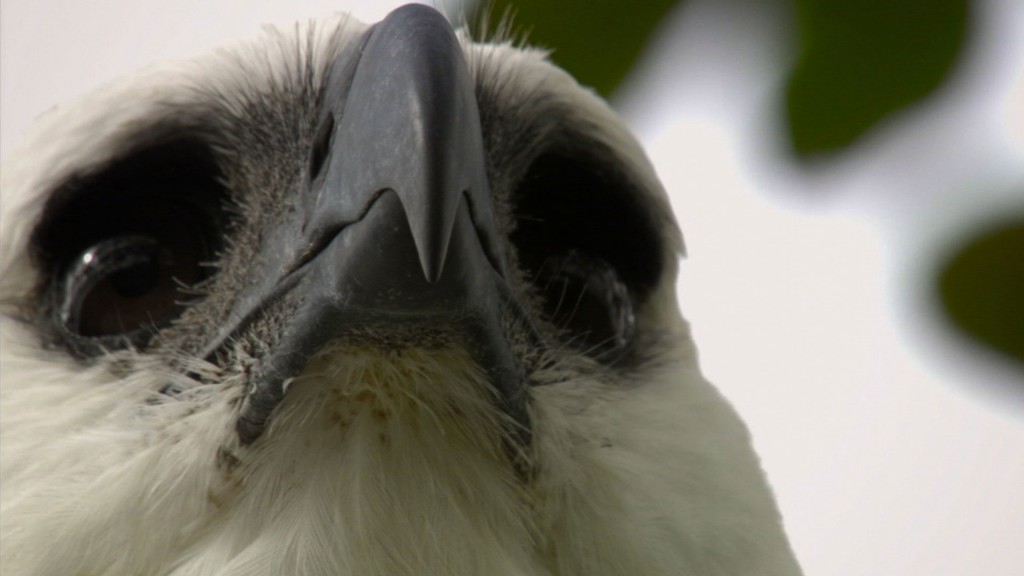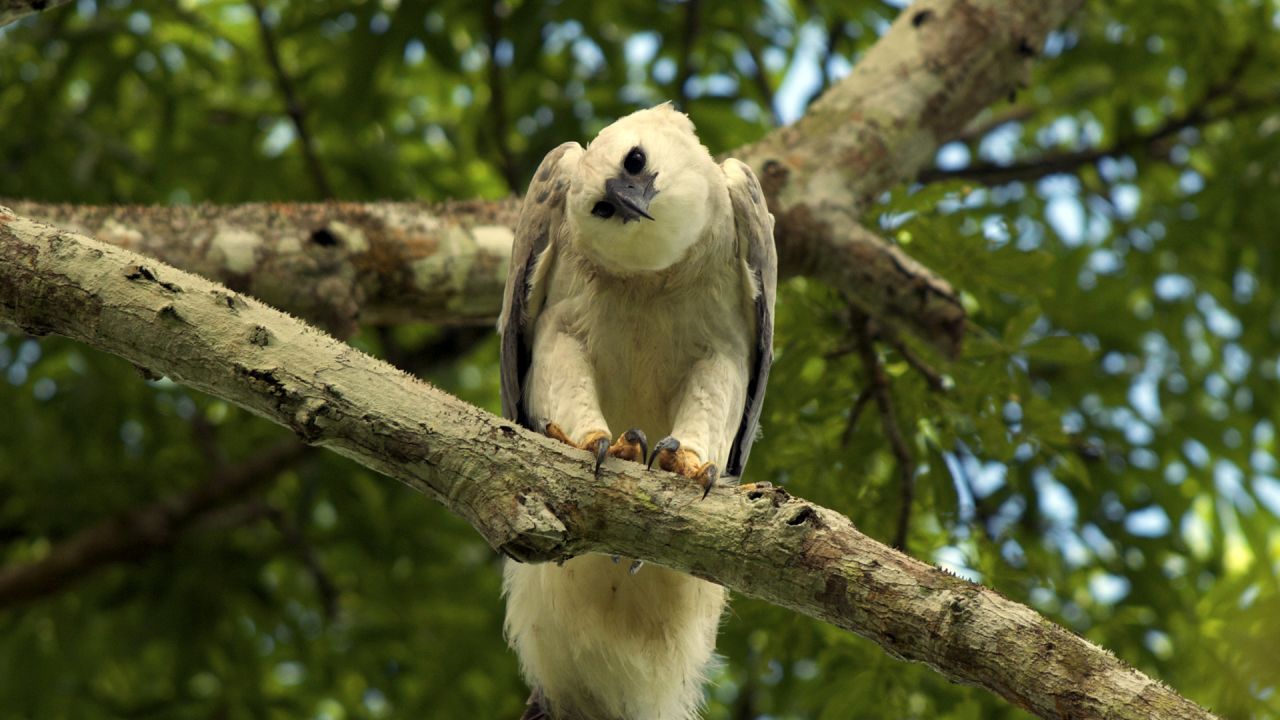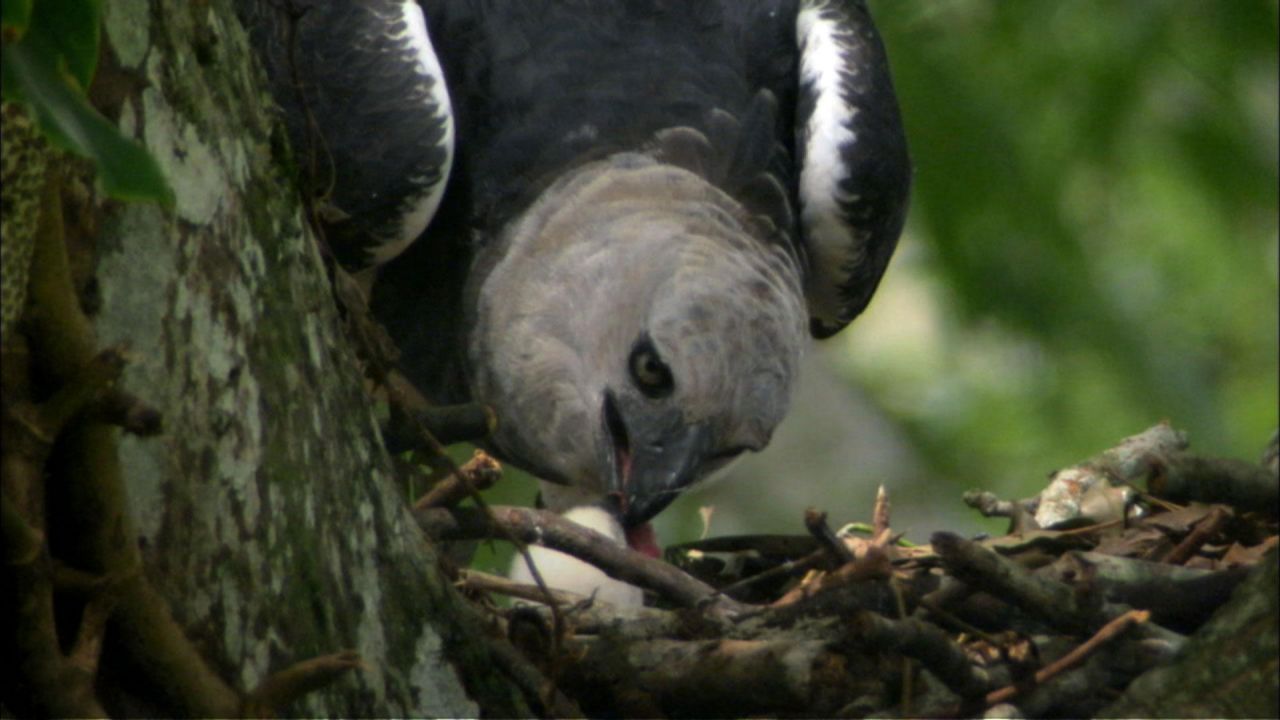
Harpy Eagle (Harpia harpyja): a neotropical species of eagle.
Kingdom: | Animalia
Phylum: | Chordata
Class: | Aves
Order: | Falconiformes
Family: | Accipitridae
Genus: | Harpia
Species: | harpyja

Size and Weight:
The harpy is one of the largest species of eagle. As is often the case with birds of prey, females are larger than males. The birds can grow to 36 to 40 inches. Females weigh between 13 to 20 pounds. Males weigh between 9 and 11 pounds. Its wings are relatively short, enabling the bird to maneuver through its thick-forested surroundings.
Appearance:
The harpy eagle has dark gray feathers with a white underside. A black band of plumage spans its neck and a fan of gray feathers crowns its head. Male and female plumage is identical. A harpy eagle’s talons can be as large as the claws of a grizzly bear. Their large talons can exert several hundred pounds of pressure, which can crush the bones of their prey and instantly kill their victims.

Diet:
A hunting carnivore and an apex predator, the harpy eagle preys primarily on tree-dwelling mammals like sloths, monkeys, and opossums. They will occasionally prey on other birds like macaws, and on reptiles like iguanas. Females generally target larger prey because of their size, leaving smaller prey for the males.
Habitat:
The birds live in the rainforests of Central and South America. They prefer large expanses of uninterrupted forest and spend the majority of their time in the forest canopy. They are rarely seen flying over the canopy or in open spaces.
Geography:
The harpy eagle is found primarily in South America, in countries like Brazil, Ecuador, Guyana, Suriname, French Guiana, Colombia, Venezuela, Bolivia, Paraguay, Peru, and northeast Argentina. The species is also found in areas of Mexico and Central America, though the populations are far smaller.

Breeding:
Harpy eagles mate for life. Large nests made of sticks and branches and lined with softer materials are built at least 90 feet from the ground in huge trees like the kapok tree, the Brazil nut tree, or the Cambara tree. The harpy couple often reuses the same nest over many years. The female lays two eggs, but once the first egg hatches, the remaining egg is ignored and will not hatch.
Both parents spend all their time protecting and raising the chick until it fledges, usually within 6 or 7 months, though it returns to the nest over the next 6-10 months for an occasional free meal. A harpy pair will produce a chick every 2-4 years. Young harpy eagles reach sexual maturity between the ages of 4 and 5.
Social Structure:
Harpy eagles are monogamous. After breeding with their mate, they both tend to their young. Once mature, their chicks may return to nest in their “home tree.” While they can breed from 5 to 30 years of age, a pair may not raise many offspring in their lifetime because of their years of dedicated parenting.

Lifespan:
The bird’s lifespan is believed to be 25 to 35 years.
Threats:
The species is at risk due to increased habitat loss from development, logging, and agriculture.
Conservation Status:
As of 2021, the IUCN has classified the harpy eagle as Vulnerable on its Red List of Threatened Species.
Conservation Efforts:
Multiple conservation groups work to protect this species. For example, The Peregrine Fund launched the Harpy Eagle Release Project in 1989, which aims to help harpy eagles in the wilderness.
Source: a previous NATURE blog and San Diego Zoo Wildlife Alliance.
